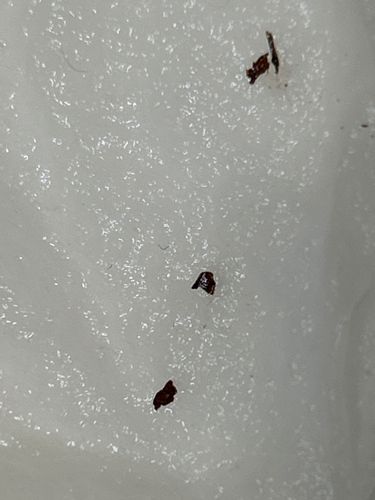Bed Bug (exoskeleton fragments/fecal matter)
Scientific Name: Cimex lectularius
Order & Family: Hemiptera, Cimicidae
Size: Adults are typically 4-5 mm (about the size of an apple seed). The fragments appear to be much smaller.

Natural Habitat
Primarily human dwellings, especially bedrooms; they hide in crevices of mattresses, bed frames, furniture, walls, and flooring during the day and emerge at night.
Diet & Feeding
Exclusively feed on the blood of humans, and occasionally other warm-blooded animals, typically at night while the host is sleeping.
Behavior Patterns
Nocturnal; they are cryptic and hide in cracks and crevices. They don't fly but can crawl quickly. Females lay tiny, pearly-white eggs (about 1 mm) in their hiding places. The fragments in the image appear to be shed exoskeletons (instar skins) or dried fecal matter, which are common signs of an infestation.
Risks & Benefits
Potential risks include itchy bites, allergic reactions, secondary skin infections from scratching, and significant psychological distress. They are not known to transmit diseases to humans. There are no known benefits.
Identified on: 11/7/2025